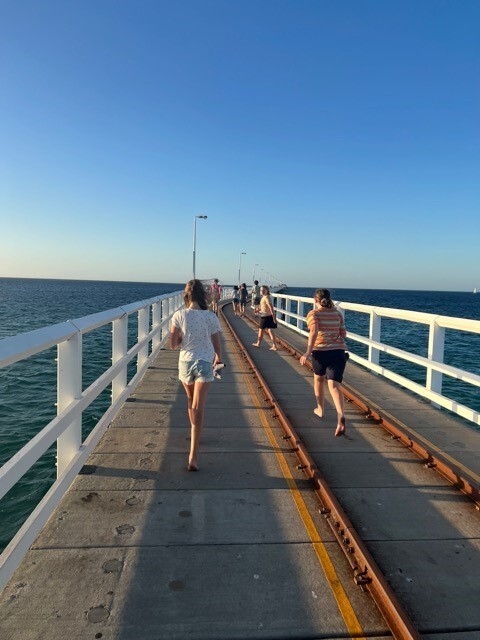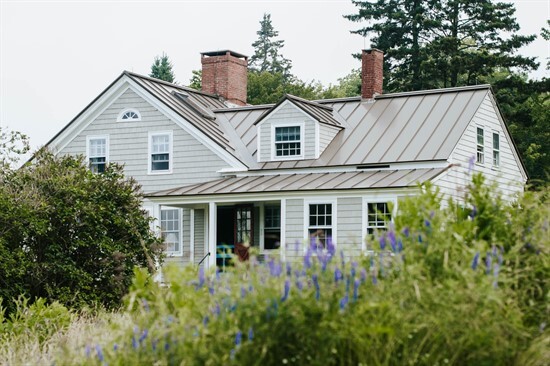Filter Content
- Carpark - Important - Please Read!
- Parent Education
- Walk and Ride to School
- Virtue Focus - Joyfulness
- Head Lice
- Class 7 Camp
- Class 7
- Karri Kindergarten
- Curry Soup
- Gemma Kiiveri - Music Tutor
- School Absences - Important (Please Read)
- Are Your Contact Details Up-To-Date??
- Class 5/6 Parent Meeting
- Assembly
- Class 7 Parent Meeting
- Board Meeting
- Class 1/2 Parent Meeting
- Feedback Welcome!
Carpark - Important - Please Read!
The school car park is a busy place, especially during the times when parents are dropping children to school in the morning, or picking children up from school in the afternoon. In the interests of keeping ALL the children (including little brothers and sisters) safe we ask that parents only use the footpaths to walk through the school grounds, and that they also speak to their children about only using the footpaths when heading into or out of the school grounds, especially around the car park.
Please see the map above which indicates by the red arrows the paths around the car park which we request families to walk on, rather than cutting across the car park to the oval or into the school grounds.
Thank you all for your assistance with this process and helping keep everyone safe!
Walk and Ride to school with Class 7
Beginning next week, Week 4, all children are invited to take part in walk and ride to school days. Each Monday we will walk to school and each Friday we will ride to school. There will be two staff members and a minimum of two Class 7 students to supervise. Parents are also very welcome to make the journey with us.
You will need to add your child’s name and class to the list at 7.45am in the park opposite the little IGA. On Monday we will walk to school and Fridays we will cycle to school. We will depart promptly at 7.50am so you need to be there at least 5 minutes prior. If your child is riding, they need a bike in good working order and a helmet. You also need to ensure your child is capable of making the distance.
On arrival at school a Class 7 student will accompany the younger children in Kindergarten and Class 1 and 2 to their verandah and teacher.
It’s a lovely social way to make the trip to school and may also help with children who are struggling with a little separation anxiety. The Class 7 children are looking forward to getting to know the younger children at our school.
Robyn and Jewels will be there on a Monday to walk, and Sam and Robyn will be there on a Friday to ride.
Reminders will be shared on our school FB pages.
Each newsletter we will be sharing a virtue that will be the focus in our school over the following three weeks.
What is Joyfulness? Joyfulness is being filled with happiness. It is a peaceful sense of well-being. Joy is inside us all. It comes from an appreciation for the gifts each day brings. Joy comes when we are doing what we know is right, and when we laugh and see the humour in things. Joy is the inner sense that can carry us through the hard times even when we are feeling very sad.
Why Practice it? Without inner joy, all our feelings are determined by what is happening to us. When things are going well, we feel glad. When things are going wrong, we feel bad. Without joyfulness, when the fun stops, our happiness stops. When we are joyful, things still happen to us, some good and some bad. If we are joyful, down deep we stay calm and serene. We look forward to things changing for the better.
How do you practice it? Joyfulness is looking forward to your day, knowing it will be good. Whatever you are doing, do it with a joyful heart. Find ways to have fun in your work and in your play. When good things happen to you, enjoy them fully. When sad things happen, let the sadness come and then let it go. Find the gift in what is happening - is this a way to become stronger? Something new to learn? Enjoy your life!
Signs of Success Congratulations! You are practicing Joyfulness when you...
- Look inside for happiness.
- Enjoy whatever you are doing.
- Appreciate the gifts in your life and in yourself.
- Find creative ways to enjoy your time.
- Have a good sense of humour.
- Feel an inner peace even when things are tough.
"Joy is an inside job'." Don Blanding
There have been several cases of Head Lice found in the school and so we ask that each family do a daily head check of their children/s hair at home (and if necessary treat) for the next fortnight.
Head lice (nits) are a common problem in primary school aged children. Head lice do not spread disease, but their bites can cause itching and sometimes skin irritation. There are safe and effective ways to treat head lice at home.
What are head lice?
Head lice are tiny wingless insects about the size of a sesame seed that live in the hair of humans and animals where they feed on blood by biting the skin. Head lice commonly affect children but adults can also have lice.
What are the symptoms of head lice?
Lice often cause itching of the skin. Bites can cause the skin to become red and irritated, which can be made worse by scratching.
You can see the lice and nits (eggs) if you look closely at your head and scalp. Nits look like tiny white dots attached firmly to the hair. They cannot be brushed or flicked off the hair, but must be physically removed with fingers or fingernails or special nit combs.
How are head lice spread?
Head lice are only found on the human head or hair. Lice can spread when people are in close contact and when they share an affected comb or hair brush.
Lice need warmth and blood to survive so they do not live for long on furniture, hats, bedding, carpet or anywhere else in the environment.
How are head lice treated?
There are two main treatment options for head lice:
- wet combing using conditioner and a fine-tooth comb
- chemical removal using synthetic or natural insecticides
The wet combing method is a cheap and effective way to treat head lice. The conditioner doesn’t kill the lice but it briefly stuns them, making it easier for the nit comb to trap and remove the lice and eggs.
If you decide to use chemical treatment, it is important that you follow the instructions closely. Repeat the chemical treatment in a week to kill any newly hatched eggs.
No single treatment works for everyone. You might need to try a few different treatments or a combination to find the method that works best for you.
Should I keep my child home from school?
There is no requirement to keep children home from school or child care as long as effective treatment begins before the next day of school or child care.
Can head lice be prevented?
It is difficult to prevent head lice. There is no evidence that chemical or herbal products can ward off head lice. Some people think that having clean hair can prevent head lice — but head lice are attracted to hair — long or short, clean or not.
Head lice are not a health threat, but they are very difficult to eradicate. Therefore, when evidence of head lice is found on a student, this note will be sent to all families within that class. The presence of head lice is a very common childhood occurrence and being part of a school community, it is inevitable that head lice are present.
If staff at school notice live lice in a student’s hair, parents will be telephoned and asked to come and collect their child and treat their hair. Students are most welcome to return to school once a treatment has occurred and no live lice are present.
Thank you in advance for your commitment and assistance with this issue.
Golden Hill Steiner School






Determined Surfers
What a pleasure it was to enjoy four fun filled days with our Class 7 students on their surfing camp in Week 2. It was fantastic to see each student pushing themselves outside their comfort zones in a range of activities over the week. This was highlighted during our second surf lesson at Honeycomb beach, south of Dunsborough. With some solid sets coming in, the class displayed courage and determination to catch waves. There were some great rides and a few wipe-outs for good measure. I left the beach feeling proud of the class and how each student had applied themselves. The Class 7 students can now say that they have surfed three surf breaks across two oceans: The Southern and Indian Oceans.








Future Crab Entrepreneurs
During the second night of camp a group of students went crabbing along the calm waters of Geography Bay. The anticipation and enthusiasm were high as we made our way down to the moonlit beach. However, hope was beginning to fade as we ventured along the shore with no crabs in sight. Then a couple were spotted, and after a number of failed attempts a solid blue swimmer crab was caught. The group erupted into excitement, cheering and sprinting up the beach to tell Robyn. We then returned to collect a furthermore four good sized crabs that made a tasty afternoon tea the next day - a highlight of the trip for sure.
















Class 7 has had a joyful start to the year. A wonderful space fitting of a High School and a curriculum rich in European History and Science to support our teenagers.
Class 7 is held collaboratively by Robyn and Sam and is structured so the students will experience an english / history / geographical main lesson alongside a mathematical and science based main lesson. The students will continue with their recorder and music notation exercises, singing, handwork, spelling, math practice, grammar, physical education, drawing and painting. A lesson each week has been set aside for their guardian class with Robyn, their class guardian. During the class the students will work through a series of exercises, discussions and activities to support the students as they embark on their 13th year. We will also be using the text Hello High School by Claire Eaton. Claire is an expert in supporting teenagers through the many challenges they will face.
To begin the term the students have begun Medieval History, studying the origins and key features of the period spanning the fall of the Western Roman Empire. The students will learn about different people who lived in medieval times in Europe and the feudal system under which they lived. Significant people and events will be discussed and studied. As part of the main lesson, we will be reading ‘The Seeing Stone’, by Kevin Crossly-Holland. It is the first volume of the Arthur Trilogy. The theme of medieval history will be the direction of our play and we will access scripts towards the end of term in readiness for a Term 2, Week 5 play performance of the renown ‘Canterbury Tales’. We will also be heading to the Medieval Festival at Balingup later in the year. How exciting!!!
Alongside the Medieval main lesson, the students will be introduced to Algebra and revising key number skills. Students will begin to explore its history, including a key biography of Al-Khwarizmi regarded as the founding father of Algebra.
We will then move into the important field of Human Biology with a focus on the 'Healthy Human Being'. The central experiences of this main lesson will develop students capacity to understand various health processes and how this combines with their own instinctive sense of health. This is an opportunity to learn about all areas of health in life and bodily health in relation to our body systems, nutrition, exercise, social health and sexuality.
In Physical Education the children have just returned from their surfing camp in Week 2 and this will be followed with a few weeks of Volleyball at school. We will then be completing a 5/6 week sailing program run by Denmark Sailing Club. The aim of the program is to provide students with an introduction program that will provide them with a range of skills for our sailing camp in Albany in Term 4. This will be completed during PE lessons on Wednesday afternoons from 1-3pm and will take place at the river mouth on Wilsons Inlet.
The Class 7 students will continue with the schools strings program with many students opting to be involved in our Friday orchestra with Marie, which is wonderful. Neal has been busy planning the Class 7 gardening curriculum which will see the children use their skills and become part of the community, working on various projects. Heather will be including some leatherwork into the Class 7 woodwork sessions and we will be working on a collaborative woodwork and art piece in Term 4.
Jewels, our handwork teacher and myself, have revisited the makings of a Waldorf doll, with the very skilled Fran. A waldorf doll will be the main handwork project for this year.
It is certainly an exciting year ahead for the students, their teachers and Golden Hill as our first year as a High School. The student cohort consists of an amazing group of children and it is certainly a privilege to support them on their learning journey.
Robyn and Sam
xx
For some reason lately, Attachment Theory is currently providing the background music to my growing understanding of relationships.
All the things I couldn’t fathom about connection have suddenly made sense through the framework of this theory.
This theory goes way back to the 1930s and came about through psychologists examining the relationship between mothers and babies. The researchers noticed that this connection was more than just a dependence on a milk supply and marked a significant and fundamental human emotional connection.
In a further experiment, primary caregivers left a room temporarily to allow the researchers to observe the babies’ responses in order to understand and categorise them. From this they came up with three main attachment styles - Secure (don’t we all wish), Insecure (lots of us - not our fault), and Avoidant (gets a very bad rap).
Please note! The way in which we emotionally attach to our primary caregivers can be the same way in which we attach romantically later in our lives. Who would have thought right? Though this is not a hard and fast rule given that in some cases, early romantic relationships can be significant enough to alter our attachment styles. But all is not lost, because once you understand your attachment style you can a) understand and empathise with yourself better, b) develop strategies to identify the root causes of your behaviour and c) effectively communicate your needs and set healthy boundaries.
So, this is roughly how it breaks down. Secure attachment means the baby trusts that their caregiver is consistently there to meet all their needs. Insecure means for some reason the caregiver can be a little inconsistent or sometimes unpredictable. Avoidant means that the baby as a survival mechanism learns not to rely on the caregiver and focuses on looking after their own needs.
Ok so fast forward and here's where it gets interesting. Avoidants find close emotional intimacy a little overwhelming, tending to focus on their own needs and show up a lot in the dating pool. Insecures need a lot of reassurance, emotional closeness and will often throw themselves into serious love bombing and overinvest in the other person. Secures are unflappable, good communicators, have an acceptable level of intimacy and healthy boundaries. This is the ideal attachment style. But this is the rub. Avoidants and Insecures often end up together with disastrous consequences. Avoidants don’t often work together because there is not enough co-interest to keep them together. So essentially avoid the avoidants and look for securely attached humans. And the moral of this story from the Kindy Teacher is we want lots of healthy securely attached humans in the world.
How you say?
- Reduce or eliminate barriers to connection. Be fully present. Place value on time spent with one another in true connection.
- Whenever possible, respond in a nurturing way when children express their needs and wants. This doesn’t mean giving in to their every demand. Rather, it means validating that the things they need, and are important to them. Ensure that they have a secure relationship with you in which they feel valued and honored. This is not a reference to material possessions but more basic needs for recognition and validation for who they are as growing people.
- BUILD TRUST. Remember that each child is an individual. As children grow older, the types of responses from parents that are most reassuring to them builds trust over time. This becomes very important for the teenage years so they can trust you to listen to their inner thoughts and challenges.
- Regulate your own emotions so that you can be objective and understanding of their behaviour and developmental challenges. Don’t take it personally or think that you are being judged on your child’s behaviour. Observe, listen and understand what the behaviour is communicating. Children need to have emotional outbursts in order to build an awareness of emotions and build strategies to identify and regulate these as they grow and develop.
This has been a very stripped back outline of attachment theory, but it lends itself well to understanding the different emotional needs we have based on the type of attachment we make with others. There is a lot of information available regarding this and a number of useful Podcasts around. Just ask me if you want to explore this further.
Sandy
With summer well and truly in the air we would love to share with you a chilled soup recipe from the book - The Waldorf School Book of Soups.
Curry Soup
2 cups rich Chicken Stock
2 tsp Curry Powder
1 tsp Lemon Juice
2 Egg Yolks
1/2 cup heavy Cream
Spring Onions, thinly sliced on the diagonal
Season 2 cups of rich chicken stock with curry powder and lemon juice.
Heat to a simmer.
Beat 2 egg yolks into heavy cream, and add some heated broth.
Gradually add egg and cream to the rest of the broth.
Simmer for about 5 minutes.
Chill.
Garnish at serving time with spring onions.
Serves 2
Gemma Kiiveri is a piano, guitar, composition and music theory tutor. She can teach classical, contemporary, jazz and blues styles. She has a WAAPA bachelor degree in composition and music technology, as well as over seven years of music tutoring experience at a private school. Learn for fun or sit AMEB exams. All ages and levels are welcome.
GHSS has arranged the services of a guitar tutor Gemma Kiivera on Tuesday's. For those Golden Hilll students interested, parents are asked to contact Gemma directly on 0431 662 917 or gkmusic@tutanota.com.
School Absences - Important (Please Read)
As we begin the school year, please note that if your child is not attending school due to illness or another reason, it is required that you notify the school office (even if you have notified the class teacher). The different ways that you can do this are -
Email - office@goldenhill.wa.edu.au
Phone the school office on 9848 1811.
Send an SMS to our dedicated school mobile number linked to our school database - 0419 495 284.
Schoolzine - Log into the Schoolzine app and use the tile on the front page labelled 'Absentee'. Information can be found below on how to install the Schoolzine app on your phone, if you haven't already. The app is one stop shop to receive information from the school, contact the school and to submit forms such as absentee/excursion forms.
Any student who is late to school, that is, arrives at school after the 8.40am bell, must come via the office where a late note will be printed to hand to the class teacher. The first part of the morning, whereby teachers welcome and settle students into the class, is important and we encourage families to try and have their children in class on time.
Thank you for your assistance with these procedures.
Are Your Contact Details Up-To-Date??
Hi Golden Hill Families,
Have you moved house recently, changed your phone number or email address???
If any of your contact details have changed please make sure you have updated the office so we have current details on file.
If you are not sure if we have your most up-to-date details, please feel free to ring the office on 9848 1811 or come in and speak to Rebekah or Jody so that we can check.
Thanks for your co-operation.
Admin Staff
15
Wed
15 Feb 2023
3:00 PM to 4:00 PM
15
Wed
15 Feb 2023
3:00 PM to 4:00 PM
15
Wed
15 Feb 2023
3:00 PM to 4:00 PM
17
Fri
17 Feb 2023
8:50 AM to 9:30 AM
17
Fri
17 Feb 2023
8:50 AM to 9:30 AM
17
Fri
17 Feb 2023
8:50 AM to 9:30 AM
17
Fri
17 Feb 2023
3:00 PM to 4:00 PM
17
Fri
17 Feb 2023
3:00 PM to 4:00 PM
17
Fri
17 Feb 2023
3:00 PM to 4:00 PM
20
Mon
20 Feb 2023
3:00 PM to 5:30 PM
20
Mon
20 Feb 2023
3:00 PM to 5:30 PM
20
Mon
20 Feb 2023
3:00 PM to 5:30 PM
7
Tue
07 Mar 2023
4:00 PM to 5:00 PM
Please know that as a school we are always open to feedback should you wish to provide it. We are constantly striving to refine our processes and make improvements where necessary.
Feel free to contact us via phone (9848 1811), email - office@goldenhill.wa.edu.au or principal@goldenhill.wa.edu.au) or come in and make an appointment to speak with someone.
Positive feedback especially welcome!






